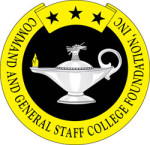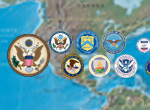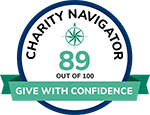by Bob Ulin, CEO, CGSC Foundation, Inc.
Editor’s Note: The Federal Times published this opinion piece June 17, 2012.
The word “interagency” is an elusive concept of voluntary associations of federal departments and agencies, each having its own procedures, jargon and rules. Each federal department has its own leader, budget, mission, career progression and congressional oversight committee. As such, there is little incentive to cooperate. While one might think that temporary service outside of one’s own agency would be seen as broadening, that is rarely the case because there is no incentive for it.
Before the Goldwater-Nichols legislation in 1984, the armed services were separate within the Defense Department and less than effective, as evidenced by the failed Iranian rescue attempt in 1980. That failure spurred Congress to pass the Goldwater-Nichols Act, which ushered in a new era of jointness within the military services. Twenty-eight years later, the armed services are indeed joint.
Similarly, the Sept. 11, 2001, attacks on the World Trade Center and the Pentagon demonstrated that our intelligence and federal response was fragmented, uncooperative and lacking central direction.
One of the things the military stresses is that teams normally perform better than individuals. Therefore, one could conclude that multiple federal agencies working together, each bringing its unique knowledge, skills and ability to the table, would normally produce better results than anything done by a single agency.
In 2005, the Army stressed the need for interagency education, doctrine and procedures that would improve its ability to develop and execute whole-of-government solutions for contingencies from peacekeeping to conflict. Much of the Army’s concern resulted from its experience working with various federal agencies in Iraq and Afghanistan.
While progress is being made in the area of interagency education, legal, financial and cultural barriers remain. Now, however, budgetary pressures — the process of having to do more with less — may provide the incentive to make interagency cooperation a necessity.
The military is particularly adept at requiring its service members to receive sequential and progressive educational courses, coupled with ever-increasing levels of responsibility and experience. Built into the military manpower system is a small number of personnel not assigned to units who are engaged in some form of training and education, from basic training to graduate school. The military services are unique in this regard. The other federal departments have neither the manpower nor budget to support a similar system. Only Congress can solve this problem through mandating and resourcing interagency assignment rotations and education.
In the meantime, the Army Command and General Staff College, Fort Leavenworth, Kan., has attracted several students from other agencies over the past four years. These students join midlevel military officers for a 10-month program of graduate-level study that includes leadership, history, national security policy, strategy, logistics, planning, operations and electives. The program is challenging and academically rigorous. Students who choose to do so can earn a fully accredited master’s degree.
Sending a few federal civilian employees to the military staff colleges each year will not create instant interagency cooperation. It takes time to develop understanding, meld cultures and broaden views.
However, if we do not begin this educational process, it will delay the ability of our midgrade leaders, in all federal departments, to appreciate and understand one another. This is requisite to achieving greater efficiency and effectiveness in the government’s response to domestic and international crises.
The military services believe in the value of lifelong learning that is achieved by training, education, experience, self-reflection and focused evaluation. It is time for the entire government to take interagency education seriously by leveraging existing capabilities.

Simply enter your email address below and click the subscribe button...
We 100% respect your privacy













Leave a Reply